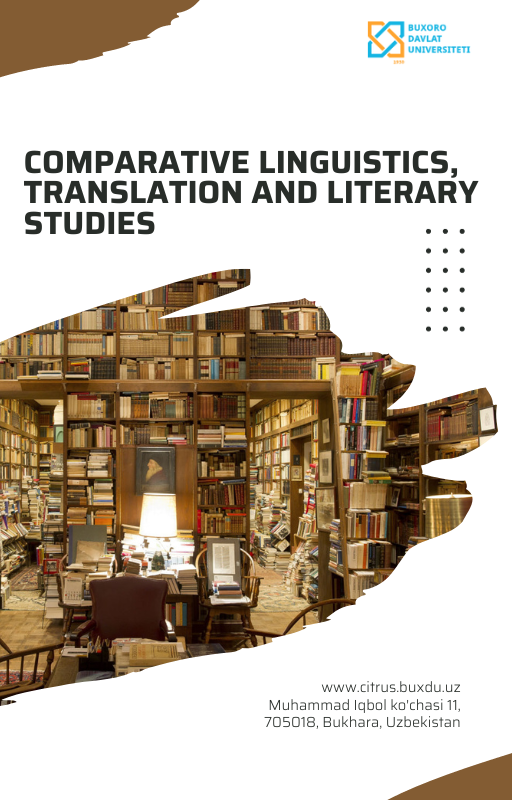Relationship of Reading Habits with Academic Performance of Secondary School Students of Sargodha
DOI:
https://doi.org/10.70036/cltls.v2i2.83Keywords:
reading habits, academic performance, teaching practices, parental supportAbstract
Background: English is taught as a compulsory subject in Pakistani educational institutions. A great many efforts have been made to boost the standard of English Language teaching and learning in Pakistan. Several studies have revealed that students do not have enough exposure to the English language. Knowledge Gaps: Despite efforts to improve English language teaching, many students enter college with underdeveloped language skills, largely due to limited exposure and ineffective teaching methods. Aims: The current study aimed to identify reading habits, factors affecting reading habits, motivators, and hindrances among secondary school students. Methods: Data were collected from 200 secondary-level students using a multi-stage proportionate stratified convenience sampling technique. Result: The results showed that students preferred school libraries for reading materials and preferred home reading, while fast food restaurants and canteens were less preferred. Story books and the internet were the most preferred reading materials, while magazines were less read. The study found that parental support in providing reading material was a significant factor, with attitude and value being the highest. Students' favorite subjects increased their reading habits, and the desire for learning new things motivated them. Novelty: The study provided valuable insights for improving academic performance and could guide future educational policies, curriculum development, and teaching practices. Implication: The findings imply that targeted interventions—such as enhancing access to engaging reading materials, involving parents in literacy development, and aligning reading content with students’ interests—can foster stronger reading habits and language proficiency among secondary school learners.
References
Abid, N., Aslam, S., Alghamdi, A. A., & Kumar, T. (2023). Relationships among students’ reading habits, study skills, and academic achievement in English at the secondary level. Frontiers in Psychology, 14, 1020269. https://doi.org/10.3389/fpsyg.2023.1020269
Boakye, N. (2017). Extensive reading in a tertiary reading program: Students’ accounts of affective and cognitive benefits. Reading & Writing, 8(1), a153. https://doi.org/10.4102/rw.v8i1.153
Brueck, J., Lenhart, L. A., & Roskos, K. A. (2019). Digital Reading Programs: Definitions, analytic tools and practice examples. In Literacy studies (pp. 135–156). https://doi.org/10.1007/978-3-030-20077-0_8
Cekiso, M., & Madikiza, N. (2014). Reading strategies used by Grade 9 English Second Language learners in a selected school. Reading & Writing, 5(1), Article 42. https://doi.org/10.4102/rw.v5i1.42
Chen, D., & Macleod, G. (2021). Effectiveness of digital tools to support pupils’ reading in secondary school. International Journal of Mobile and Blended Learning, 13(2), 1–16. https://doi.org/10.4018/ijmbl.2021040101
Chettri, K., & Rout, S. (2013). Reading habits—An overview. Journal of Humanities and Social Science, 14(6), 13–17.
Day, R., & Bamford, J. (2004). Extensive reading in the second language classroom. Cambridge University Press.
Greene, A., & Serro, W. T. (2015). Encouraging critical thinking and professional reading with literacy bags. The Open Communication Journal, 9, 65–71. https://doi.org/10.2174/1874916X01509010065
Henia, N. (2003). Evaluating the effectiveness of metacognitive strategy training for reading research articles in an ESP context. English for Specific Purposes, 22(4), 387–417. https://doi.org/10.1016/S0889-4906(03)00017-6
Ismail, N. M., & Tawalbeh, T. I. (2015). The effect of Iranian EFL learners’ awareness of reading comprehension strategies on their motivation to read. International Journal of English Language Education, 1(1), 162–178.
Karchmer‐Klein, R., & Shinas, V. H. (2012). Guiding principles for supporting new literacies in your classroom. The Reading Teacher, 65(5), 288–293. https://doi.org/10.1002/trtr.01044
Lewis, T. (2013). Between the social and the selfish: learner autonomy in online environments. Innovation in Language Learning and Teaching, 7(3), 198–212. https://doi.org/10.1080/17501229.2013.836202
McNamara, D. S. (2007). Reading comprehension strategies: Theories, interventions, and technologies. Lawrence Erlbaum Associates.
Mokhtari, K., & Sheorey, R. (2002). Measuring ESL students' awareness of reading strategies. Journal of Developmental Education, 25(3), 2–10.
Nhapulo, M. A., Simon, E., & Van Herreweghe, M. (2017). Enhancing academic reading skills through extensive reading. Southern African Linguistics and Applied Language Studies, 35(1), 17–40. http://hdl.handle.net/1854/LU-852051
Palani, K. K. (2012). Promising reading habits and creating literate society. International Reference Research Journal, 2(1), 91–98.
Ralenala, M. F. (2003). Reading behaviour of first-year physics students at the University of the North (Doctoral dissertation). Rand Afrikaans University.
Walundari, E. (2016). Developing curriculum and tasks for teaching reading. Journal of English and Education, 6(2), 23–35. https://doi.org/10.20885/jee.vol6.iss2.art3
Wang, X., Xia, L., & Duan, Q. (2022). The barriers and informational needs of students and junior researchers when reading scientific papers. Learned Publishing, 35(3), 308–320. https://doi.org/10.1002/leap.1475
Woolfolk, A. (2010). Educational psychology (11th ed.). Pearson Education International.
Yuksel, I., & Yuksel, I. (2012). Metacognitive awareness of academic reading strategies. Procedia - Social and Behavioral Sciences, 31, 894–898. https://doi.org/10.1016/j.sbspro.2011.12.164
Zhang, L. J., & Wu, A. (2009). Chinese senior high school and EFL students’ metacognitive awareness and reading-strategy use. Reading in a Foreign Language, 21(1), 37–59.
Zhong, Q. M. (2018). The evolution of learner autonomy in online environments: A case study in a New Zealand context. Studies in Self-Access Learning Journal, 9(1), 71-85. https://doi.org/10.37237/090106
Downloads
Published
How to Cite
Issue
Section
Citation Check
License
Copyright (c) 2025 Muhammad Adnan, Waqar Ahmad Awan, Muhammad Safdar Bhatti, Samina Semab, Muhammad Awais Anwer, Maria Noor, Rehana Muskan

This work is licensed under a Creative Commons Attribution 4.0 International License.
Copyright
Authors who publish with Comparative Linguistics Translation and Literary Studies agree to the following terms:
- Authors retain copyright and grant the journal right of first publication with the work simultaneously licensed under a Creative Commons Attribution 4.0 International License that allows others to share the work with an acknowledgment of the work's authorship and initial publication in this journal.
- Authors are able to enter into separate, additional contractual arrangements for the non-exclusive distribution of the journal's published version of the work (e.g., post it to an institutional repository or publish it in a book), with an acknowledgment of its initial publication in this journal.
- Authors are permitted and encouraged to post their work online (e.g., in institutional repositories or on their website) prior to and during the submission process, as it can lead to productive exchanges, as well as earlier and greater citation of published work.
License
This work is licensed under CC BY 4.0






